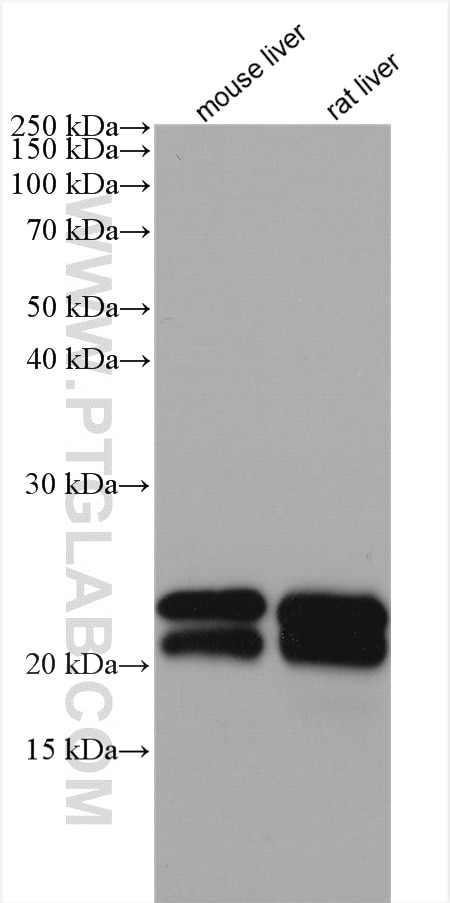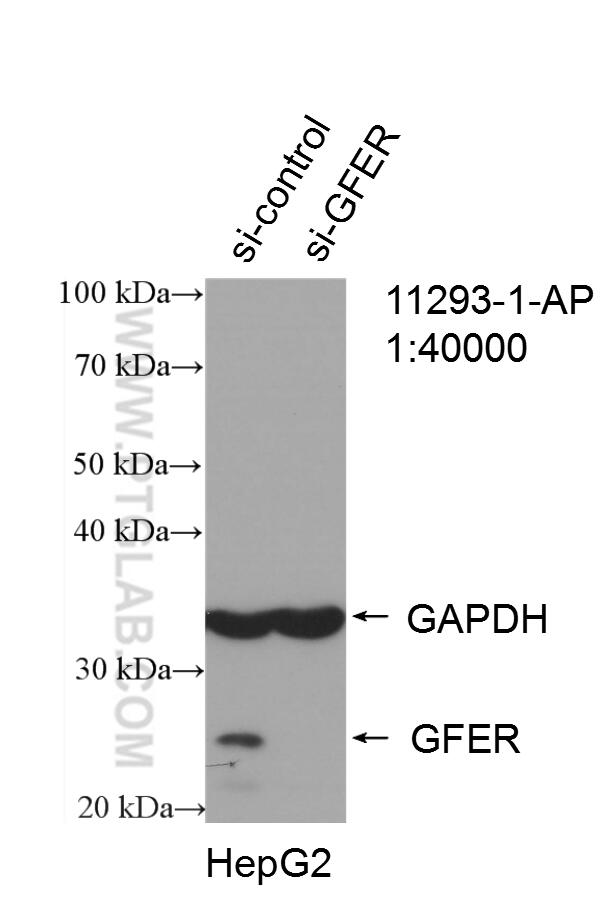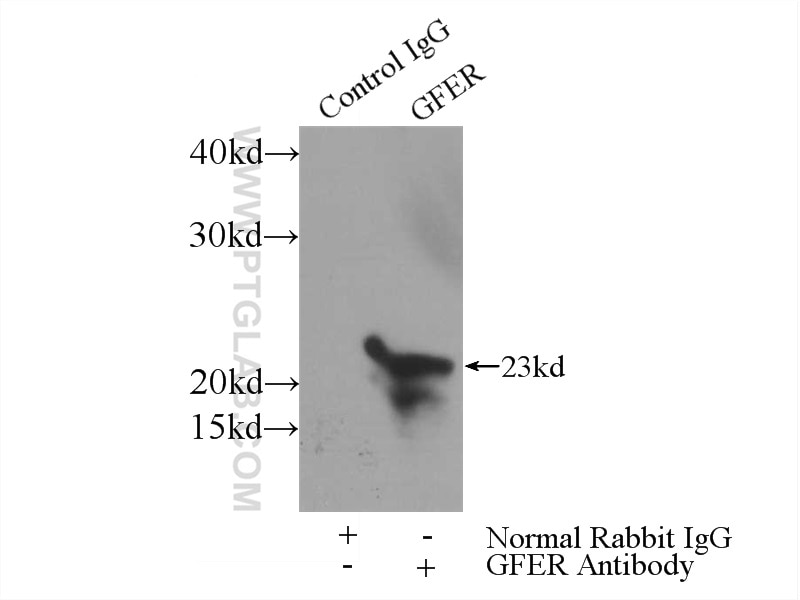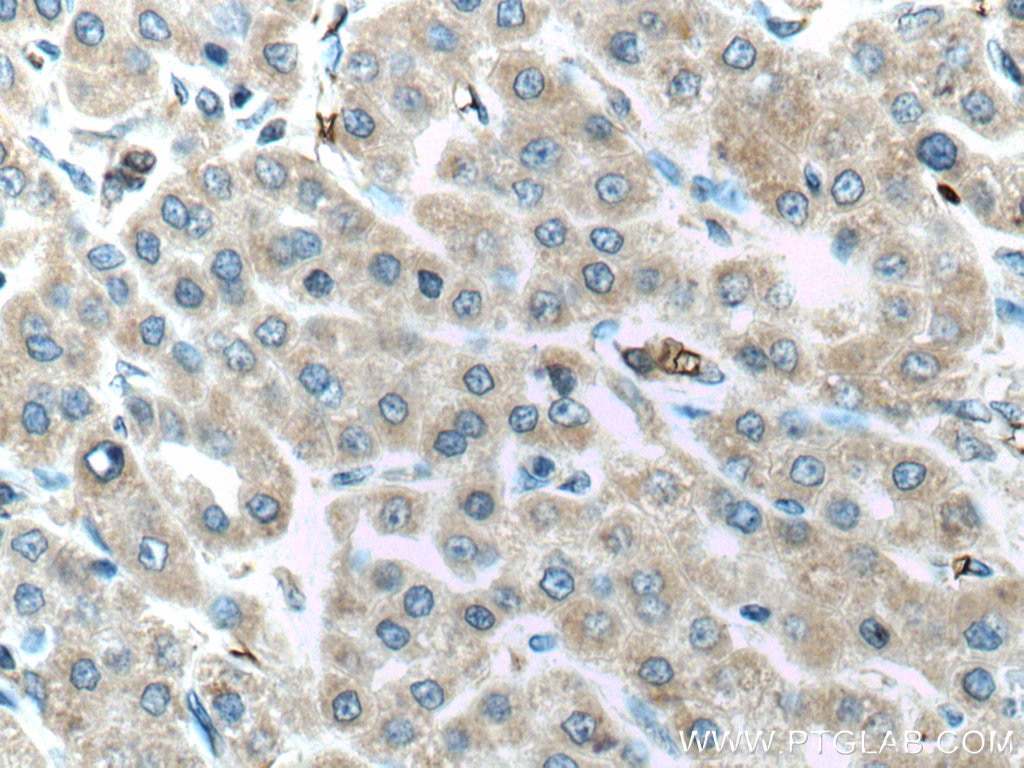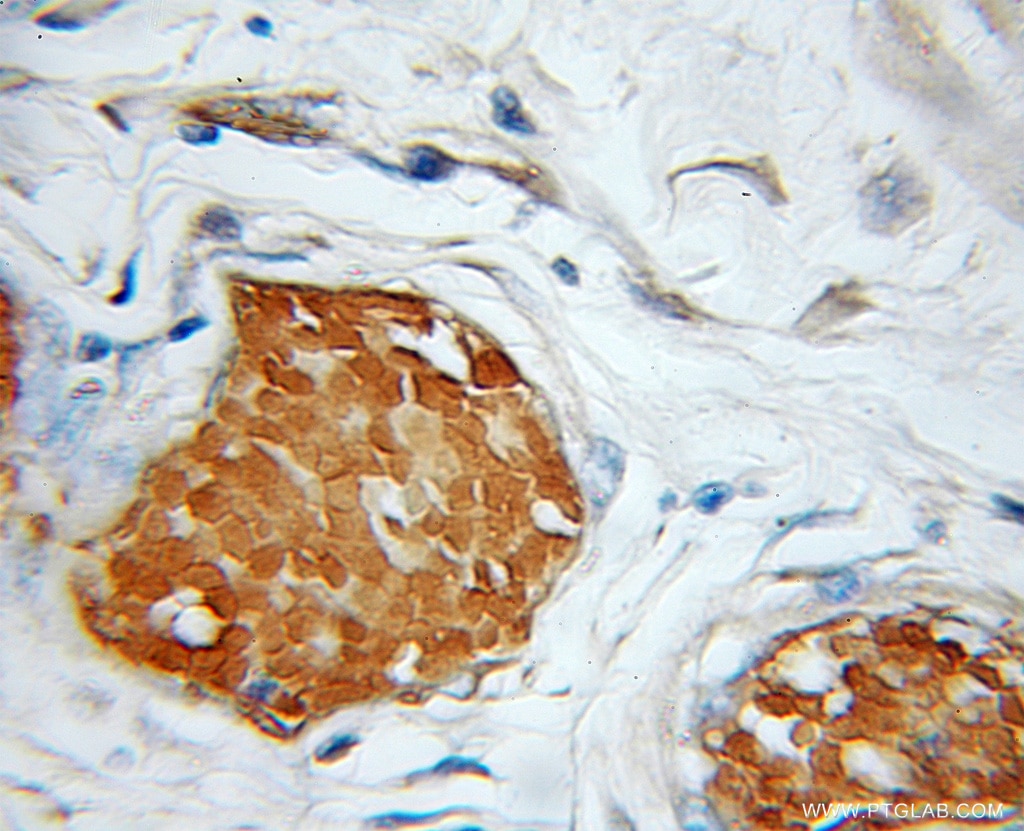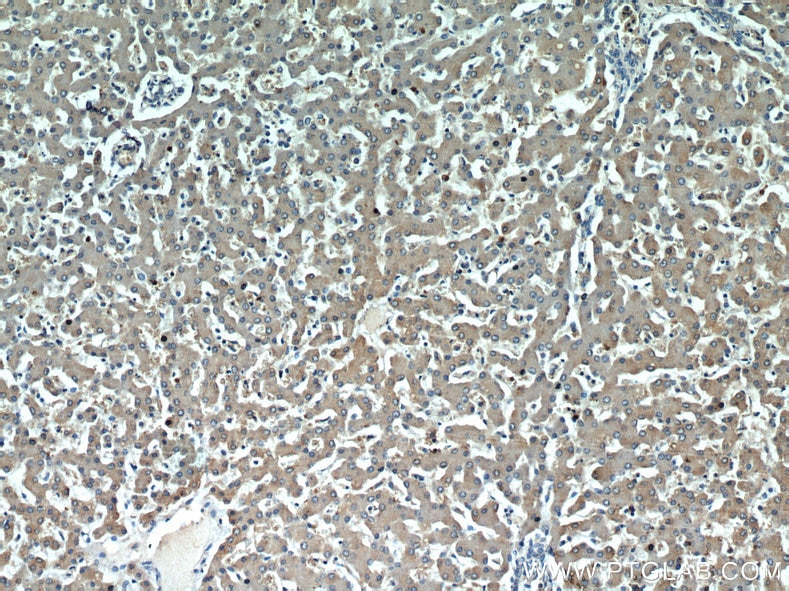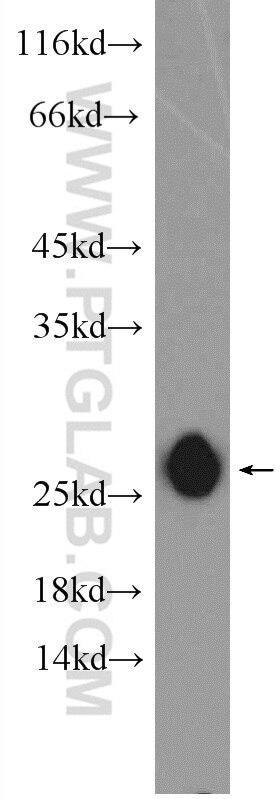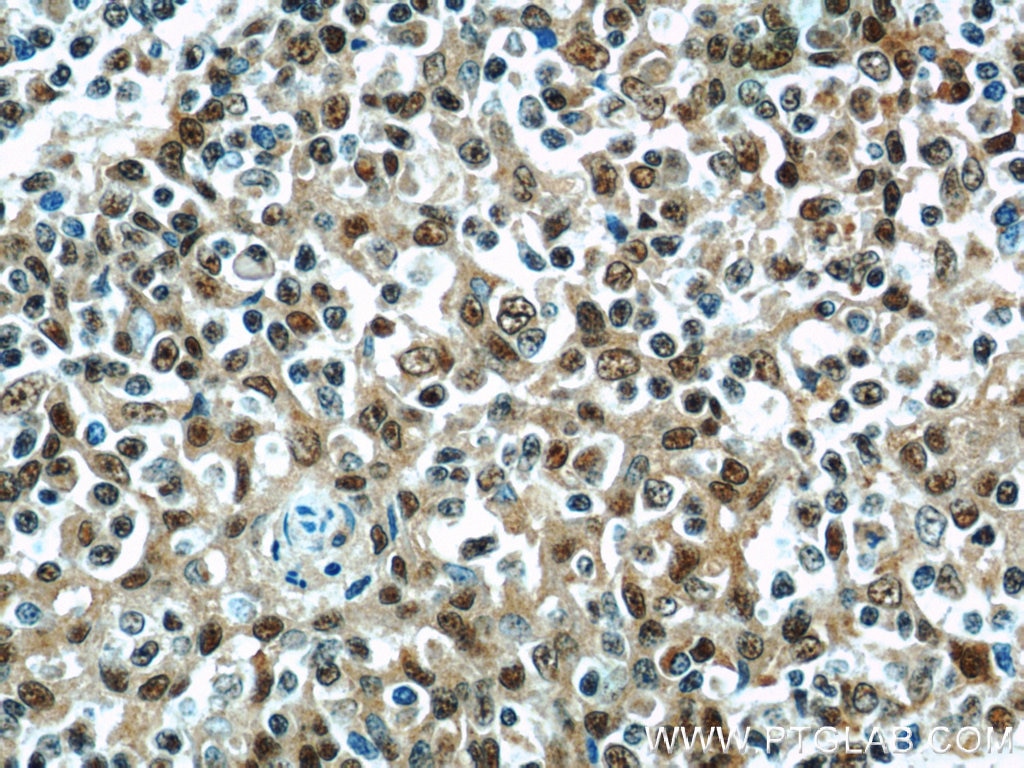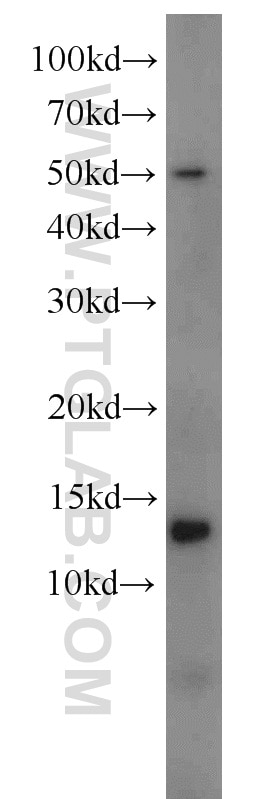- Phare
- Validé par KD/KO
Anticorps Polyclonal de lapin anti-ALR
ALR Polyclonal Antibody for WB, IP, IF, IHC, ELISA
Hôte / Isotype
Lapin / IgG
Réactivité testée
Humain, rat, souris
Applications
WB, IHC, IF-P, IP, ELISA
Conjugaison
Non conjugué
N° de cat : 11293-1-AP
Synonymes
Galerie de données de validation
Applications testées
| Résultats positifs en WB | tissu hépatique de souris, cellules A375, cellules A431, cellules HepG2, tissu hépatique de rat |
| Résultats positifs en IP | tissu hépatique de souris |
| Résultats positifs en IHC | tissu de cancer du foie humain, tissu de cancer du côlon humain, tissu hépatique humain, tissu testiculaire humain il est suggéré de démasquer l'antigène avec un tampon de TE buffer pH 9.0; (*) À défaut, 'le démasquage de l'antigène peut être 'effectué avec un tampon citrate pH 6,0. |
| Résultats positifs en IF-P | tissu rénal de souris, |
Dilution recommandée
| Application | Dilution |
|---|---|
| Western Blot (WB) | WB : 1:1000-1:8000 |
| Immunoprécipitation (IP) | IP : 0.5-4.0 ug for 1.0-3.0 mg of total protein lysate |
| Immunohistochimie (IHC) | IHC : 1:50-1:500 |
| Immunofluorescence (IF)-P | IF-P : 1:50-1:500 |
| It is recommended that this reagent should be titrated in each testing system to obtain optimal results. | |
| Sample-dependent, check data in validation data gallery | |
Applications publiées
| KD/KO | See 8 publications below |
| WB | See 22 publications below |
| IHC | See 3 publications below |
| IF | See 8 publications below |
| IP | See 1 publications below |
| FC | See 1 publications below |
Informations sur le produit
11293-1-AP cible ALR dans les applications de WB, IHC, IF-P, IP, ELISA et montre une réactivité avec des échantillons Humain, rat, souris
| Réactivité | Humain, rat, souris |
| Réactivité citée | rat, Humain, souris |
| Hôte / Isotype | Lapin / IgG |
| Clonalité | Polyclonal |
| Type | Anticorps |
| Immunogène | ALR Protéine recombinante Ag1840 |
| Nom complet | growth factor, augmenter of liver regeneration |
| Masse moléculaire calculée | 15 kDa, 23 kDa |
| Poids moléculaire observé | 23-25 kDa |
| Numéro d’acquisition GenBank | BC028348 |
| Symbole du gène | GFER |
| Identification du gène (NCBI) | 2671 |
| Conjugaison | Non conjugué |
| Forme | Liquide |
| Méthode de purification | Purification par affinité contre l'antigène |
| Tampon de stockage | PBS avec azoture de sodium à 0,02 % et glycérol à 50 % pH 7,3 |
| Conditions de stockage | Stocker à -20°C. Stable pendant un an après l'expédition. L'aliquotage n'est pas nécessaire pour le stockage à -20oC Les 20ul contiennent 0,1% de BSA. |
Informations générales
GFER (FAD-linked sulfhydryl oxidase) is also named as ALR, HERV1, HPO. It plays an important role in the disulfide relay system (DRS) in human mitochondria. The GFER gene codes for 2 distinct isoforms that are probably synthesized from the same mRNA with the use of different initiation codons. The long isoform (205 amino acids, 23/21 kD) is located mainly in the mitochondrial intermembrane space and exists under nonreducing and nondenaturing conditions as a homodimer and a heterodimer. The shorter isoform (125 amino acids, 15 kD), which lacks 80 amino acids at its N terminus compared to the longer isoform, is present predominantly in the nucleus (PMID: 19409522, 24880092, 21152698).
Protocole
| Product Specific Protocols | |
|---|---|
| WB protocol for ALR antibody 11293-1-AP | Download protocol |
| IHC protocol for ALR antibody 11293-1-AP | Download protocol |
| IF protocol for ALR antibody 11293-1-AP | Download protocol |
| IP protocol for ALR antibody 11293-1-AP | Download protocol |
| Standard Protocols | |
|---|---|
| Click here to view our Standard Protocols |
Publications
| Species | Application | Title |
|---|---|---|
Cell Stem Cell Disrupting Mitochondrial Copper Distribution Inhibits Leukemic Stem Cell Self-Renewal.
| ||
Hepatology Hepatic stimulator substance resists hepatic ischemia/reperfusion injury by regulating Drp1 translocation and activation.
| ||
Am J Hum Genet The mitochondrial disulfide relay system protein GFER is mutated in autosomal-recessive myopathy with cataract and combined respiratory-chain deficiency. | ||
Elife Augmenter of liver regeneration regulates cellular iron homeostasis by modulating mitochondrial transport of ATP-binding cassette B8.
| ||
FASEB J Augmenter of liver regeneration protein deficiency promotes hepatic steatosis by inducing oxidative stress and microRNA-540 expression.
|
Avis
The reviews below have been submitted by verified Proteintech customers who received an incentive forproviding their feedback.
FH Yaschar (Verified Customer) (06-26-2018) | sample: 20 µg highly purified rat liver mitochondriaVery poor signal intensity even after 30(!) mintues of exposure (see image). Note that this is the best signal I was able to get.Barely any signal in different whole cell lysate.Even after changing the PAGE and Blotting protocols the signal does not get better, incubating over night does not help either.High number of unspecified bands, different lysate and reduction protocols did not help in this regard.I am extremely unsatisfied with this antibody.
 |
